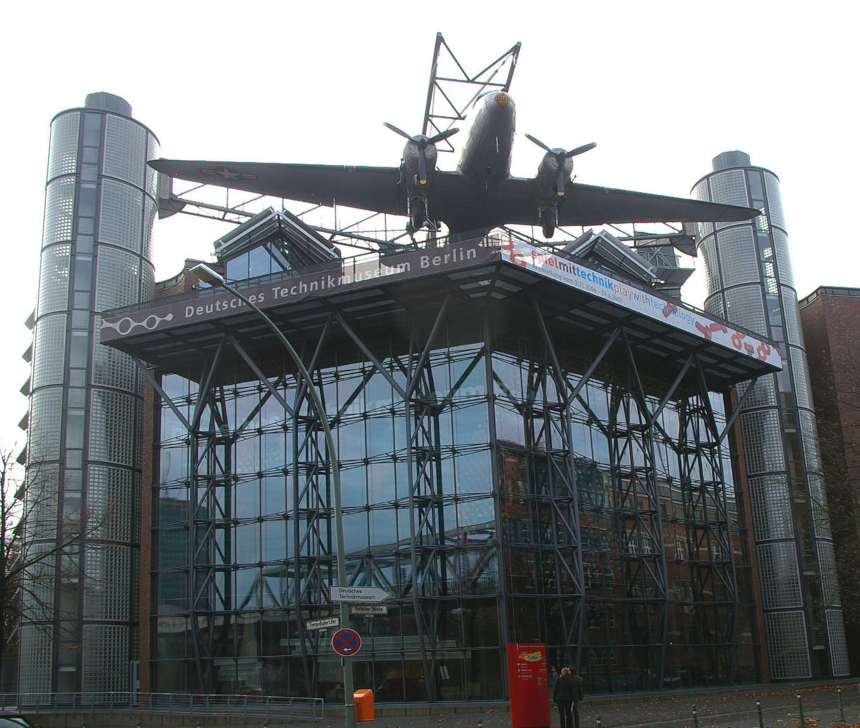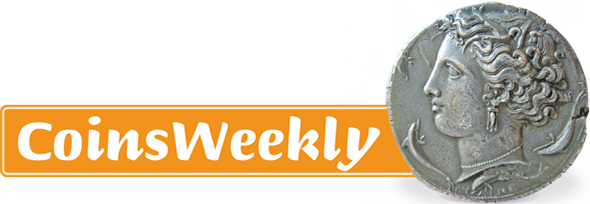Deutsches Technikmuseum Berlin
Wenn es kein Logo gibt, wird diese Spalte einfach leer gelassen. Das Bild oben bitte löschen.
(Dieser Text wird nicht dargestellt.)
Trebbiner Strasse 9
10963 Berlin
Phone: +49 (0) 30 43 97 34 0
info@technikmuseum.berlin
https://technikmuseum.berlin/
Opening hours
Mo closed
Tue – Fri: 9 am – 5:30 pm
Sa, Sun, holidays: 10 am – 6 pm
The Deutsches Technikmuseum Berlin, or German Technical Museum Berlin (DTMB), is easily recognized by the twin propeller Douglas C-47 Skytrain, aka the “Dakota,” sitting atop its roof. The DTMB was first established in 1982 on the site of a former trade hall housing more than 100 smaller, specialized collections.
A Banknote Collection about Science
Among the displays of railway cars and engines, airplanes, ships, steam engines, automobiles, and even a brewery, are two walnut cabinets with 46 vertical slide-out panels holding a collection of banknotes. Most of the notes consist of modern (post-1960) international issues arranged by categories, such as physics or shipping. Each panel contains banknotes representing a particular topic and each banknote shows the vignette of a famous person, technical device, industry, or commodity. For each banknote, information is provided in German only with the country, date of issue, denomination, and a brief description of the banknote’s face and back.
The cases may be hard to find as its location apparently changes. One year its location was just before entering the Railway Engine Shed Number 1; two years later, it was elsewhere. Nothing is special about them, set atop grey metal tables with a tarnished brass plaque with a German inscription. The banknotes were from the private collection of Dr. Anthony R. Michaelis, acquired in 1996 with the help from Bankgesellshaft Berlin AG and Urenco, Ltd. of England. On display are nearly 300 of the reported 1,300 banknotes Michaelis gave to the DTMB.
It All Started with the Ming Dynasty
The first panel contains only a single banknote, labeled as “The World’s Oldest Advanced Printed Banknote.” It is from the reign of Emperor Hung-Wu (1328-1398), the founder of the Ming dynasty. Technically, Sweden lays claim to the first “banknote,” but this was the first form of paper money.
The next nine panels contain notes honoring Christopher Columbus and those persons of science. Generally, each panel displays six banknotes, so the banknotes for a particular topic are not an exhaustive grouping.
Panel 3 shows six notes with portraits of mathematicians. The 1980 Iraqi 10,000-dinar banknote has the image of Abu Ali al-Hasan ibn al-Hasan ibn al-Haytham, aka Alhazen, who is generally regarded as the father of optics.
Famous Physicists
Panel 7 shows six notes representing physicists. One banknote is a 1968 Israel 5-lirot banknote picturing Albert Einstein. Although Einstein is probably best known for his theory of relativity, his 1921 Nobel Prize for Physics was for the photoelectric effect.
Time magazine named Einstein “Person of the Century” in 1999.
Other Topics
Not all banknotes are from the modern era, nor do they only picture people. The remaining 36 topics are divided among various industries and commodity products.
Three panels are dedicated to the railroads. In one of the two panels showing railroad vignettes before the year 1920, two banknotes are from the United States. One of these is an 1859 $10 Bank of Chattanooga, Tennessee banknote featuring an “express train” with three passenger cars.
Polymer Notes with Holograms
The last panel (number 46) concludes the collection with polymer banknotes having an optically variable device, or hologram—one of the latest advances in the printing of banknotes. Australia became the first to issue polymer banknotes as currency in 1988, shown by the 1988 Australian $10-banknote with Captain James Cook’s ship on the front with a hologram of Cook’s head.
This text was written by Howard M. Berlin and first published in his book The Numismatourist in 2014.











